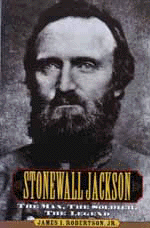

More than 130 years have passed since the death of Confederate General Thomas Jonathan "Sonewall" Jackson, but time has only deepened the fascination and reverence with which he is regarded. Military academies still teach his tactics.
After years of detailed research, Alumni Distinguished Professor of History James I. Robertson Jr. has written Stonewall Jackson, The Man, The Soldier, The Legend. The book has been called "the most comprehensive and deeply researched biography of Stonewall Jackson published this century." The 24-page bibliography and 135-page note section attest to the depth of research upon which Robertson drew to create this work of more than 900 pages.
This biography presents the extraordinary life of a man who became one of the most famous generals in U.S. history. In lyrical prose interwoven with rich historical details, it reveals not only Jackson the brilliant military strategist, but also Jackson the man of humble beginnings, eccentricities, and deep religious conviction.Robertson has included maps of every major military campaign. Other illustrations include a previously unpublished photograph of Jackson.
The first promotional event for the book in the Southeast is planned for Feb. 22 at Virginia Tech's Volume Two Bookstore. The book is published by MacMillan Publishing USA and is available in bookstores throughout the country. It has been chosen as a main selection of the History Book Club and the Book-of-the-Month Club.
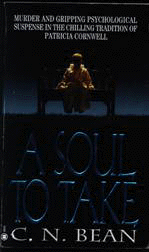
A Soul to Take by Carl Bean, Virginia Tech English instructor, plunges the reader into the complex world of homicide investigations in his latest murder mystery.
The book follows police captain Rita Trible as she attempts to solve a series of brutal murders of young boys. Her path to the crimes' solution is hampered by dead-ends and unexpected twists. Trible is frustrated by contradictory clues at the crime scenes. "From the bodies, we have to assume murder is in this man's heart," she says. "Maybe he's decided the crimes will be more perfect if he leaves different evidence each time."
Bean is donating a percentage of his book sales to organizations connected with the National Committee to Prevent Child Abuse. The book is published by Onyx Books, a division of Penguin Books USA, 376 Hudson St., New York, NY 10014.
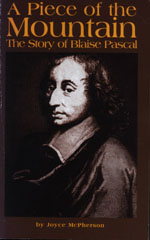
Joyce McPherson (human nutrition and foods '83) is author of a biography of one of the most important scientists and mathematicians of the 1600s. A Piece of the Mountain, The Story of Blaise Pascal, is written on a 5th- to 6th-grade reading level.
Pascal, who was converted to Christianity as an adult, was a devoted apologist for the Christian faith as well as a ground-breaking scientist. The author describes his inventions, including "a syringe with precisely fitted piston." It was the first pneumatic device and led to the discovery of 'Pascal's Law.' (When the pressure on a liquid or gas in a container is increased or decreased at one point, the change in pressure takes place equally throughout.)
The book is published by Greenleaf Books, 1570 Old LaGuardo Rd., Lebanon, TN 47087.
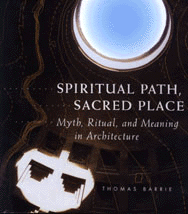
Sacred architecture is "built to symbolize the meanings and accommodate the rituals of the particular belief system of its time," writes Thomas Barrie (architecture '81, M. Arch.) in Spiritual Path, Sacred Place: Myth, Ritual, and Meaning in Architecture.
Barrie provides a comparative study of how sacred space is formed and entered, documented by architectural examples from many different religions, locations, and historical settings. He contends that sacred architecture often symbolizes the spiritual path and its goal.
The author, who uses numerous photographs and drawings to illustrate his theories, suggests that sacred architecture is often "built myth," in which symbolic images and spaces symbolize the spiritual journey. He examines sacred sites ranging from Japanese Zen gardens to ancient Egyptian temples to contemporary religious structures.
The book is published by Shambhala Publications Inc., Horticulture Hall, 300 Massachusetts Ave., Boston MA 02115.
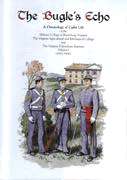
Col. Harry Temple (industrial engineering '34), writes in The Bugle's Echo, A Chronology of Cadet Life at the Military College at Blacksburg, Virginia, Volume I (1872-1900), "Ours was a vastly different world from that of the great university of today and tomorrow." He wrote the book, he says "to make ... available to future generations a comprehensive coverage of cadet life at the small pre-World War II military college at Blacksburg."
The book is full of anecdotes, facts, and details about Virginia Tech's early years amassed during Temple's 23 years of research. Numerous photographs reproduced from originals in the university's special collections are supplemented by full-color illustrations of uniformed cadets along with Temple's own flag and insignia drawings.
Only 900 copies of the book are available for sale. Proceeds from the sale of the $100 book will be used to publish volumes II and III of the corps' history.
The Bugle's Echo is published by and available from the Virginia Tech Corps of Cadets Alumni, Inc., V.T.C.C.A.-The Bugle's Echo, 143 Brodie Hall, Blacksburg, VA 24061-0213.
The history of Virginia Tech enlivens the pages of Images and Reflections: Virginia Tech, 1872-1997. Edited by public service communications manager Clara B. Cox (English M.A. '84) and associate vice president for university relations Larry Hincker, the book presents color photography by Todd Buchanan accompanied by historical text by Cox. Images from the university archives also are interwoven with highlights on the terms of each of Tech's 14 presidents.
"Anyone who strolls through the campus today will see buildings stand as silent sentries of the Virginia Tech heritage," Alumni Distinguished Professor James Robertson Jr. writes in the foreword. "The cold stone seems lifeless, but it is alive with the names of men and women who contributed in lasting fashion to the growth and glory of the university."
The book is published by Virginia Tech Foundation at Harmony House, P.O. Box 90, Prospect, KY 40059 or 1-800-809-9334.
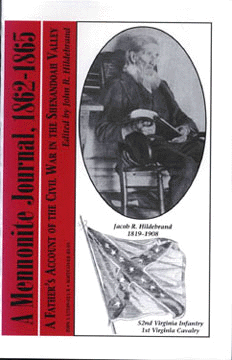
A journal kept by his great-grandfather during the Civil War inspired John R. Hildebrand (civil engineering '50) to compile A Mennonite Journal, 1862-1865. This book portrays a Mennonite household that was immersed in the war surrounding their Virginia home. The story shows that the strong pacifist beliefs of the Mennonite church were not always observed by its members.
The journal writer, Jacob Hildebrand, was a successful farmer who also served as minister to the Augusta County Mennonites for several decades. Hildebrand recounts taking food and clothing to his three sons who served in the Army of Northern Virginia.
He also describes Augusta County's contributions of men and supplies to the war effort, his observations of the 1864 raids by Hunter and Sheridan, and the Battle of Waynesboro.
The book is published by Burd Street Press, P.O. Box 152, Shippensburg, PA 17257-0152.
A leading authority on safety in the workplace, psychology professor E. Scott Geller has compiled a wealth of practical ideas for increasing safety in the workplace in Working Safe: How to help people actively care for health and safety.
Geller's book, which is full of anecdotes and case studies, teaches managers how to increase workers' personal responsibility for safety and how to involve all employees in actively caring for what he calls a "total safety culture." The book gives an overview of the human dynamics of accidents and suggests how this understanding can be used to reduce work mishaps.
The book is published by the Chilton Book Company, Radnor, PA.

Chris Colston (marketing '80), former editor of the Hokie Huddler, has compiled Hokies Handbook: Stories, Stats and Stuff about Virginia Tech Football. His fact-packed volume provides information about Hokie football squads from 1892 through 1995. From anecdotes to yearly statistics and play-by-play recounting of key games, the book is a valuable resource for anyone interested in Virginia Tech football. Among the famous firsts included here are Tech's first completed pass, which didn't come until 1906, against William and Mary. It was a real bomb. Fullback Russell Smith threw two yards to Herbert David Hodgson in a 28-0 win.
The book is published by the Wichita Eagle and Beacon Publishing Co., Wichita, KS 67201-9820.
Voices of Women: Moving Forward with Dignity and Wholeness reveals the courageous leadership, indomitable spirit, and global perspective of the women who attended the U.N. Fourth World Conference on Women in 1995. Su Clauson-Wicker, editor of Virginia Tech Magazine, interviewed Bella Abzug, Charlotte Bunch and other world leaders, grassroots activists, scholars, and homemakers who share their stories of frustration and triumph in Beijing.
These women describe not only what they found at the largest world conference, but how they became empowered to create a healthful world for women and men. These 40 voices include Hillary Clinton, Nobel laureate Rigoberta Menchu, African activist Wangari Maathai, and others.
Clauson-Wicker is co-editor of the book with Lucy Lee. The work was produced with a Fetzer Institute grant managed by Patricia Harbour and Lynne Twist, and is available directly from the Fetzer Institute at 9292 West KL Avenue, Kalamazoo, MI 49009-9398.
Home | News | Features | Research | Philanthropy | President's Message | Athletics | Alumni | Classnotes | Editor's Page